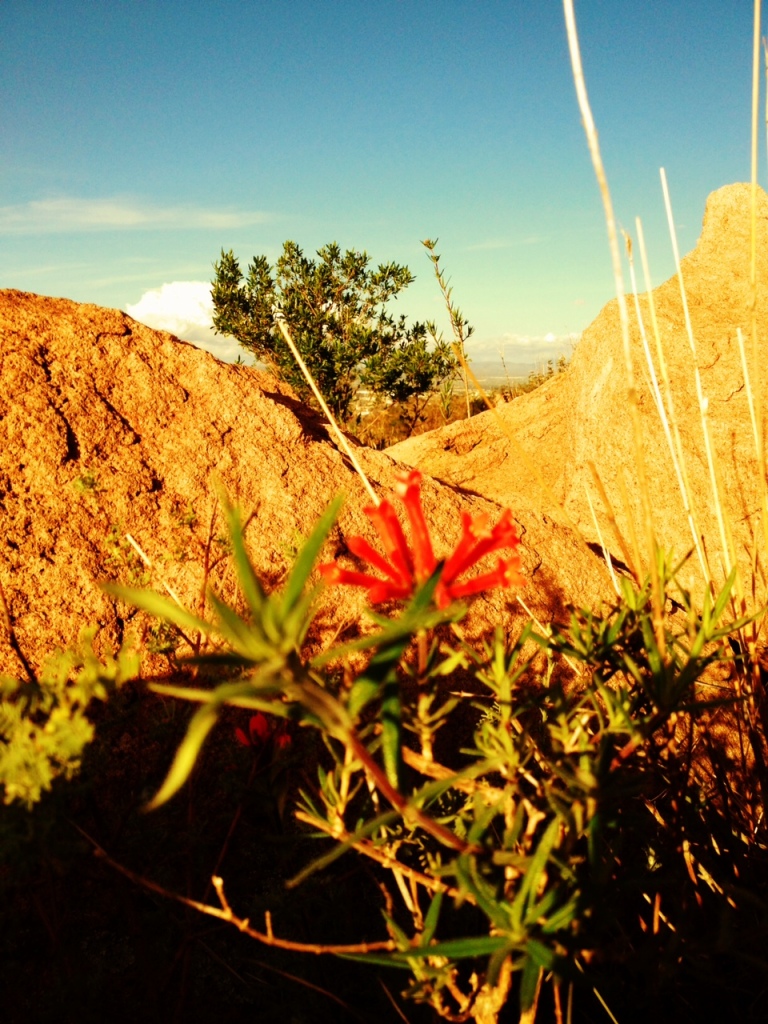Flowering in the Desert: The Church in an Inhospitable Environment
 I am in Mexico as I write this. I can look outside and see the sun at work drying the hard brown earth. Children playing soccer make dust devils swirl as they run.
I am in Mexico as I write this. I can look outside and see the sun at work drying the hard brown earth. Children playing soccer make dust devils swirl as they run.
San Luis Potosí lies nestled in the arid mountains of central México. It’s difficult to imagine that anything can grow here, since so much of the year passes without rain. Yet everywhere you look you can see small patches of green fingers poking out from the ground—a little grass here and there, cacti, mesquite trees. The bougainvilleas paint purple and red pictures against a brown backdrop.
 Walking out in the countryside, however, emphasizes the inhospitable nature of the environment. Rocks, sand, mountains—at times an almost lunar landscape. Beauty, but a dread kind of beauty—angular, lots of sharp barbs and keen edges.
Walking out in the countryside, however, emphasizes the inhospitable nature of the environment. Rocks, sand, mountains—at times an almost lunar landscape. Beauty, but a dread kind of beauty—angular, lots of sharp barbs and keen edges.
As I walk, I puzzle over who it was that wandered into this part of the world first and thought it might make a good home. Water is a mission rather than a natural resource. Food requires imagination and ingenuity borne on the bent back of sun-scorched labor.
And yet, in the midst of this uncooperative terrain life blooms. Stubborn plants prosper. Animals breed. People live and love and create; they produce children who laugh and old people who still sing.
“How can this be?” I wonder. In conditions less than hospitable to life … life flourishes. Sinuous. Unyielding. Spiny.
It makes no sense that I can see. Still there is life.
People have speculated recently about the viability of Christianity. In particular, the church and its waning popularity has stood at the center of the discussion. The numbers seem clear: the church, with few exceptions, has fallen on hard times. The soil that only a few generations ago was fertile and black has hardened—just a few unflagging tendrils peeking through cracks, a flash of color here and there from plants that will not surrender, a tree or a cactus that has made peace with its grim environment.
But there is life … and if you look closely, more life than first meets the eye. There are churches thriving under impossible circumstances: announcing the reign of God, pursuing justice, tending the sick, feeding the hungry, holding hands with those left to die in the desert.
It occurs to me that the church has experienced lean seasons in the past. But every time things green up for a bit, we think the fat years are permanent, that the land of milk and honey knows no drought or blight. But plenty never lasts.
On the other hand, neither does lean.
What an inhospitable environment can produce is strength and focus, and the tenacity to do what we have been given to do, even though we may never see it result in the kind of fecundity we think signals “success.”
Heroes and saints are almost never made during easy times. The first holy mothers and fathers bloomed in the desert, after all. Heroes and saints aren’t people who do great things for God because they have no shortcomings, no flaws, no challenges from their environment; heroes and saints are people who do great things for God in spite of the fact that the deck’s stacked against them, that the shortcomings and flaws always threaten to undo them, that the environment in which they live doesn’t want them. Heroes and saints are people determined to live their everyday lives as if God matters more than the sum total of their weaknesses and challenges.
We may very well be in the desert.
Now, I think, is the time for heroes and saints, for a church unwilling to yield.

